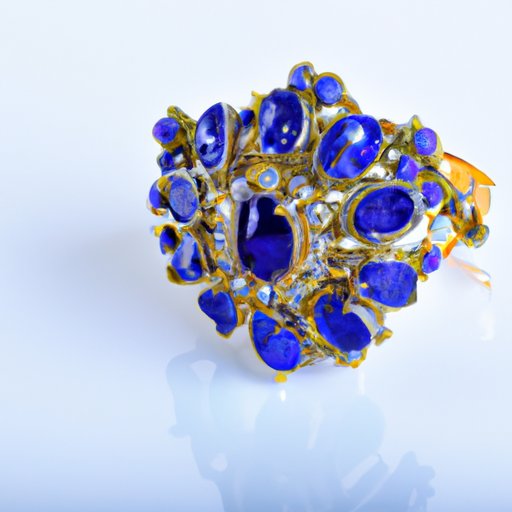Introduction
Jewelry photography is an art form that requires skill and practice. Whether you’re trying to take pictures of your own pieces or taking professional photos for a business, there are certain techniques to keep in mind in order to capture beautiful, eye-catching shots. This article will provide an overview of the basics of jewelry photography, including the importance of lighting, using a macro lens or specialty close-up lens, capturing sparkle and shine, styling and arranging jewelry pieces, and staging and framing shots.
The Importance of Lighting
Lighting can make or break a photograph, and this applies to jewelry photography as well. When it comes to lighting, there are two main types to consider: natural light sources and artificial light sources. Natural light sources include sunlight, window light, and even moonlight. Natural lighting often gives the best results, as it provides soft, diffused light that won’t wash out the details of the jewelry. However, if you don’t have access to natural light sources, you can also use artificial light sources such as studio lights, LED lights, and flashlights.
Using a Macro Lens or Specialty Close-up Lens
When photographing jewelry, it’s important to get up close and personal with the pieces. A macro lens or specialty close-up lens is ideal for capturing detailed shots. Macro lenses allow you to capture extreme magnification and bring out the intricate details of the jewelry. If you don’t want to invest in a macro lens, you can also use a smartphone and a macro attachment lens. This will allow you to get close enough to capture the details without sacrificing quality.
Capturing Sparkle and Shine
Sparkle and shine are two of the most important aspects of jewelry photography. To capture these elements, you’ll need to use props, backgrounds, and editing techniques. Props such as mirrors or reflective surfaces can help to add sparkle and shine, while backgrounds such as velvet or black foam boards can help create contrast and depth. Editing techniques such as adjusting white balance and exposure can also help to enhance the sparkle and shine of the jewelry.
Styling and Arranging Jewelry Pieces
When photographing jewelry, it’s important to make sure that the pieces are arranged in an aesthetically pleasing way. This means considering color, texture, and composition when arranging the pieces. You can also use props to help create an interesting composition, such as adding flowers or other objects to the scene. The goal is to draw the viewer’s eye to the jewelry pieces and create a harmonious image.
Staging and Framing Shots
Once you’ve taken the photo, it’s time to stage and frame the shot. Framing the shot means making sure that the jewelry is the focus of the photo, while staging the shot means making sure that the background and colors complement the jewelry. You may also want to play around with different angles and perspectives to create an eye-catching composition. Remember to take multiple shots from different angles and distances to ensure you get the perfect shot.
Conclusion
Jewelry photography is an art form that requires skill and practice. By keeping the importance of lighting, using a macro lens or specialty close-up lens, capturing sparkle and shine, styling and arranging jewelry pieces, and staging and framing shots in mind, you can create beautiful and eye-catching photos of your jewelry pieces. With patience and practice, you too can become a master of jewelry photography.


